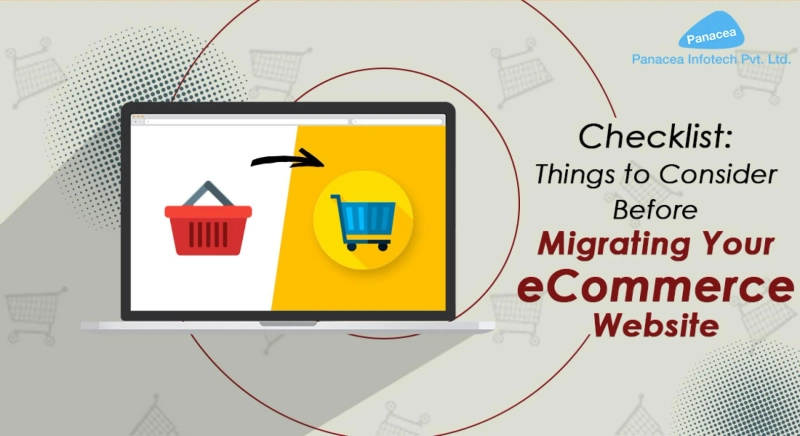In today\'s era, every business growth is directly proportional to customer satisfaction. This tech-savvy world requires every business to keep evolving. As the introduction of the latest features is done to drive your company a rewarding sale. Hence, migrating one\'s websites to a new platform is a must action to perform.
But most of the eCommerce sellers fear moving ahead with the concept of website migration. They find it risky, as it costs money, takes time, and of course, you need to move all your data. With so much on the list, it is evident for many to think that it may ruin their sales. But the truth is that eCommerce website migration can improve sales. By updating your current website, you improve your business processes and offer a great customer experience.
Now the question arises, how to know when you need to migrate your website? Well, below mentioned are the signs suggesting that you need to move on to the new platform:
Lack of latest features
Integration problems
Require too much maintenance
Hampers scalability and growth
The manual process takes too much time
Suffering customer experience
The above are the signs that suggest that this is the time to make a switch. Moving on, if you haven’t updated your website in the last few years, probably this is the right time to update and enhance your website’s performance.
With this, let’s understand how to choose the right eCommerce platform.
How to choose the right eCommerce platform?
The best way to choose the right eCommerce platform is to know what will fit your business goals. For that, you need to find the answers to the following questions:
What are the other possible challenges of migration?
Will migrating to an alternate platform resolve your existing challenge?
Is the new platform able to handle your business size and business type, i.e., B2B/B2C?
Will the alternate platform be able to contain all the features you regularly use?
If not, will your in-house members be able to adjust all the changes?
What will be the expected conversion rate?
Are you ready to afford the maintenance and implementation cost of the alternate platform?
By answering the above questions, you can make a better conclusion.
As now that you have decided to choose the platform let’s move on to the migration process. Below mentioned are the points to consider:
Customers
Sales Orders
Products
Media files
Reviews
Invoice
Loyalty Points
Credit Memo
Shipments
Blogs, etc.
Now let’s take some examples to understand the migration scenarios one may face:
When migrating from Yahoo to BigCommerce
Here the configurable product structure differs between both, which causes some obstacles in having identical SKUs as the old site for Parent and child products. Thus, one needs to add some additional variants to the child SKUs.
When migrating from Shopify to Magento
The old Shopify website maintains the order number in alphanumeric sequence, but it will, by default, support only numerical sequence when switched to Magento. Thus, you may need to add some customization to maintain the series as the old website.
When migrating from Magento1 to Magento 2
During Magento 1 to Magento 2 migration, you will have to reset the account password to log in.
But as you know, every problem has a solution. If you face any such issues, you can reach out to the developers.
Once your data is migrated successfully, and you are all set to switch to the new platform. You need to check out the following things before migrating your eCommerce website:
Without fail, back up your existing website, including media and configurations.
Setup shipping and payment methods with proper live credentials after testing them with Sandbox.
Ensure the API connections/third-party connectors are established or ready to establish.
It\'s better to pause receiving orders of the existing site for recent data migration. You may see it as a demerit as it can affect your sales, but it will be the best bet to avoid any loss of orders while switching to other websites.
Do not forget to install SSL, setup CDN, and cache, map DNS. After all this, you are ready to GO LIVE.
Wrapping up
The motto of this blog was to help you in understanding the importance of migrating an eCommerce website. If you plan to do one, Panacea Infotech’s eCommerce experts can walk you through all the processes in detail.
Contact us to discuss your concern.



